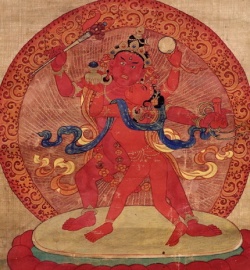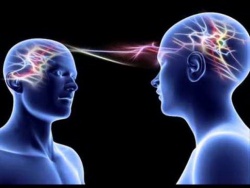Animitto Sutta
Animitto Sutta: The Signless
translated from the Pali by
Maurice O'Connell Walshe
[1] [The Ven. Moggallaana has described how, with the aid of the Buddha, he has passed through all the jhaanas [2] right up to the "sphere of neither-perception-nor-non-perception."]
"Then, friends, I thought: 'The signless concentration of the heart, the signless concentration of the heart, they say now what is that?'
"Then I thought: 'In this a monk, paying no attention to any distinguishing signs,[3] enters on and dwells in that concentration of the heart which is without signs. This is called "The signless concentration of heart."'
"Then, friends, paying no attention to any distinguishing signs, I entered on and dwelt in that concentration of the heart which is without signs. But as I dwelt thus,[4] the consciousness conforming to signs arose.[5]
"And then, friends, the Blessed One came to me by his powers[6] and said: 'Moggallaana, Moggallaana, Brahman,[7] do not slacken off in the signless concentration, make your mind steady, make the mind one-pointed, concentrate your mind in the signless concentration!'
"And after that, friends, paying no attention to any distinguishing signs, I entered on and dwelt in the signless concentration of the heart.
"Now, friends, if anyone were to truly declare: 'Through the Teacher's compassion the disciple gained great super-knowledge,'[8] he could rightly declare this of me."
Notes
1. Animitto: cf. SN 22.80, n. 4. Not, as Woodward translates, "The unconditioned," which would be asankhata-Nibbaana.
2. There are the four "lower" jhaanas ("absorptions") associated with the World of Form (ruupaloka), and the four "higher" jhaanas associated with the Formless World (aruupaloka). They are referred to in similar terms in the first eight sections of Sa.myutta 40 (not included in this Anthology) thus: 1. "With Thought-Conception" (savitakka); 2. "Without Thought-Conception" (avitakka); 3. "By Happiness" (sukhena); 4. "Balanced" (upekkhako); 5. "Infinity of] Space" (aakaasa); 6. "(Infinity of] Consciousness" (viññaana); 7. "Nothingness" (akiñcañña); 8. "Neither-perception (nor-non-perception)" (nevasaññii). For further details of these absorptions, which are pre-Buddhist and not essential to the attainment of enlightenment, see BD (Buddhist Dictionary (2nd ed.), by Ven. Nyaa.natiloka, Ven. Nyaa.naponika (ed.), Colombo 1972].
3. Nimitta. The characteristic features of anything.
4. Woodward translates: "But when I so abode (and had emerged from trance)." His parenthetic addition, here and in the previous eight suttas (not included in this Anthology) is not justified by the text. Moggallaana had not emerged from the absorption (Woodward's "trance"), but his concentration having momentarily weakened, he was lapsing into the state below (i.e., in this case, "Neither-perception-nor-non-perception").
5. Nimittaanusaari-viññaa.na.m. Woodward's "consciousness that followed after distinguishing marks" is not quite correct. He himself refers to the Commentary on the Sutta Nipaata: "i.e., consciousness that was still tainted with raaga-dosa-moha (lust, hatred and ignorance)."
6. Iddhiyaa. Woodward's "by magic power" is inappropriate. The meaning is telepathic power, which is neither "magical" nor confined to Buddhas. See BD s.v. Abhiññaa.
7. "Brahman" here is clearly used in the second of the two senses (SN 35.187, n. 1).
8. Mahaa-abhiññataa. Moggallaana has attained to the sixth abhiññaa, the only one that is supramundane: the extinction of the cankers (aasavakkhaya) (cf. SN 12.23, n. 2).

